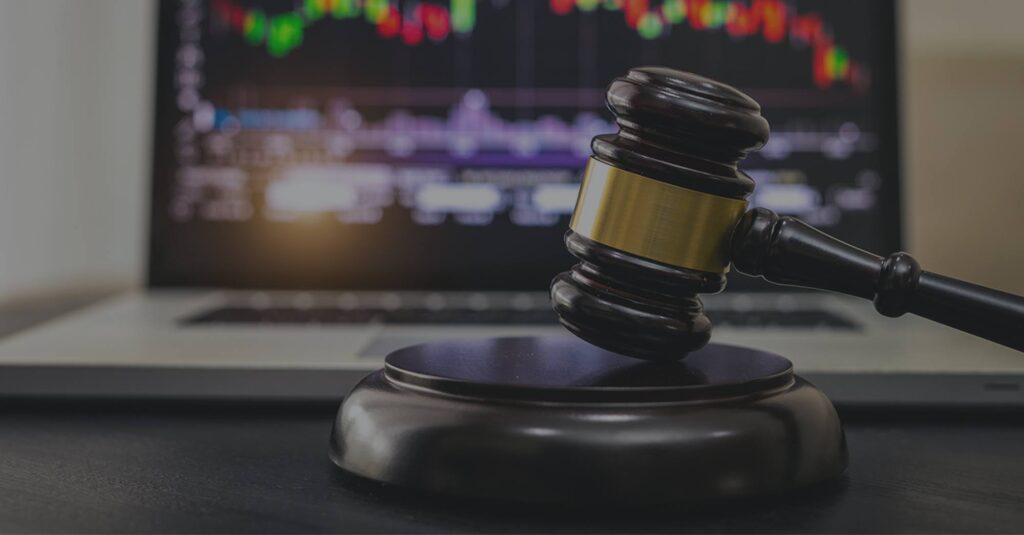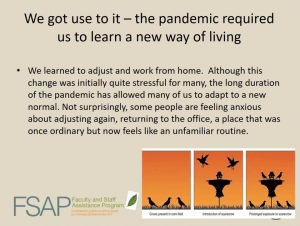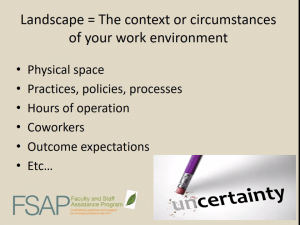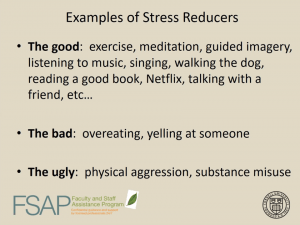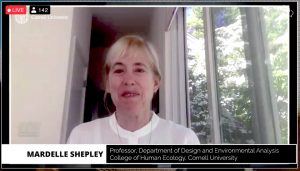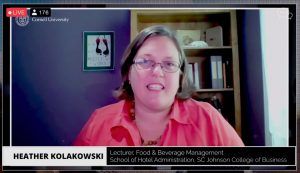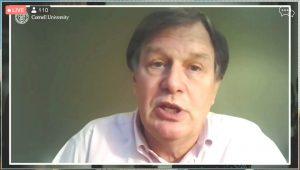In today’s competitive market, the customer experience is everything — and not just in the hospitality industry. From the very first impression until the customer walks out the door, there are countless opportunities for making their experience memorable. As part of eCornell’s Keynote webcast series, customer service expert Elizabeth Martyn from Cornell Hotel School joined eCornell’s Chris Wofford for an interactive discussion on understanding the customer mindset, how to exceed expectations — and even when offering guests a warm cookie might backfire.
What follows is an abridged version of that conversation. Watch the full keynote here.
Martyn: I feel like I always have to tell people that I’ve never actually worked in a hotel, which throws people off a little bit when we start talking about hospitality. But I take a broader view and believe that hospitality is really everywhere. If you have clients, or customers, or patients, or anyone who buys anything from you, you’re really in the business of providing a service and therefore you’re in the business of hospitality.
Wofford: The two of us were talking a little bit about the modern tech-savvy consumer and their expectations.
Martyn: I think whenever I start to talk about these things, I ask people to think about themselves. Because I know I’m one of these people. I’ve got my phone attached, I’ve got my computer ready. And whether you’ve thought about it or not, we’re all becoming really highly trained by our devices and by technology to have information at our fingertips. You expect that you’re going to be able to get everything done on your phone. Now, not everyone prefers to do it on their phone, don’t get me wrong. Some people are more traditional. They want that phone call or they want to do it on their computer.
But that’s where we’re moving to, because we’ve been trained that we’re always going to get exactly what we want, and there’s so much on our phones that we can use to make it exactly how we want it. But it’s not like we’re all issued the same phone with the same apps or the same email provider. Everybody can pick and choose what’s going to work for them and to create a digital experience that reflects who they are as a person. But now that we’re so used to having this thing that’s like attached to our bodies all day, every day, these ideas, preferences and expectations start to come out of the digital experience and into everything else that we participate in.
The second that your organization or your business doesn’t have a digital experience that allows people to get at those commonly asked questions with key information, or your digital information is out of date, that starts creating some conflict really quickly because now people feel disappointed. Because if other companies can do it, why can’t yours?
Wofford: As service providers, the next question that comes up is: well, what can we do about that? How do we manage these expectations?
Martyn: Start by paying attention to the questions people are asking. If you’re hearing the same question over and over, you should be thinking, “Whoa, this is a trend. We have an opportunity here.”
Wofford: If something comes up time and time again, it should really be searchable information on your website, right?
Martyn: Exactly. You should be thinking about how to make it more present on our homepage, whether that’s in the FAQs or the About section. You want to have that information available. I think a lot of service organizations tend to make the mistake of thinking that high-quality service is high-touch service. The second that you make the mistake of thinking that the only way to provide high-quality service is to force me to interact with someone on your team, you’re missing the mark because that might not be my preference.
You want to offer a choice by putting things online for the people who are going to go to your website and navigate there. It should also be easy to get ahold of someone who’s going to talk to me and engage with me maybe over the phone or in person, if that’s my preference. But you don’t want to choose for your consumers what’s going to be best for them. No one likes being told what they like.
Wofford: I really relate to that. Sometimes when you’re out to dinner and the server has come to you twenty times unnecessarily, it gets to be a little bit much. I understand that it comes from a genuine place of wanting to help, but it can be a little much. Now, let’s take on the idea of establishing operational systems. When you come to an organization and start working with a hospitality group, how do you get everybody up to speed and on the same page?
Martyn: You cannot climb the mountain the first time you ever go on a hike. It’s really important to identify your core problems and tackle those first. What can you put in place right away that will impact at least some guests?
Oftentimes, it’s an issue of bandwidth. You can’t see really great solutions if you’re behind the curve all the time. So start with a triage approach and identify the fast and easy things that will impact some folks and give you a little more space to start to then tackle the next, maybe more sophisticated, version of this solution. Don’t feel like you have to solve everything perfectly right away.
Wofford: What are the greatest opportunities that you can see with technology being able to help?
Martyn: I think it’s so easy to think that technology is going to solve it. That’s really not the right viewpoint. The viewpoint should be about how it supports us and supports anyone who’s interacting with our clients, our customers or our guests.
We talked about getting information up on your website, making your FAQs more available. What are those common questions that you’re hearing several times a day on the phone or over email? You need to get that information more quickly into the hands of your consumer so they can find it and move on with their day. That way, your frontline teams have more time and space to provide really meaningful interactions to the guests who really need it rather than anxiously trying to rush them through the conversation because there are ten people in line or the email inbox is filling up. You want your workers to feel like it’s acceptable and appropriate to take more time to work through those more complicated solutions. So it’s not only solving problems, but also making those investments to grow the relationship between your organization and your consumers.
Wofford: How do you see big data and analytics helping face-to-face interactions?
Martyn: You have to understand who the person is you are interacting with. Can you get a jump on some of that through the use of profile information? Does this person have a family? Are they a single business person? Where are they based? The faster I can get at that, the more sophisticated my engagement with them is going to be.
But there’s one thing I want to caution everyone against – and I feel very strongly about this – and that is that I’m a different person every time I interact with your brand. I am not the same person from my first purchase to my last. Travel’s a really great way to illustrate this. I’m a very different person with different needs and different expectations when I’m traveling alone for business than when I’m traveling with my husband for a getaway. It’s still me, so my profile’s going to say all the same things, but what I’m looking to get out of the service interaction really shifts depending on the context of my trip.
Wofford: What’s the takeaway on that?
Martyn: I think that’s one of the values of human interaction. The thing that’s emerging out of all the technology advancements is that there is still a very, very important place in the world for the human-to-human component of service delivery. And that’s true regardless of what industry you’re in. So, how do you take out all the perfunctory pieces?
Checking in or checking out of a hotel is a classic example. The process can be very perfunctory, focused only on the room number, the key, getting the customer to sign the waiver. But what if that interaction could be about something else entirely, and the room key and the waiver signature and the credit card are more like afterthoughts? What would be most helpful for the guest to have a wonderful stay? If there’s one thing the property could do for them over the next two days, what would it be? In my case, when I’m a business traveler, I might say that it’s providing bottled water. When I’m with my husband, I might say it’s letting us decide when housekeeping should come.
Wofford: Let’s say you’ve inherited staff who have worked for twenty plus years under one brand and they now find it difficult to follow a new training plan under a rebranded hotel. What do you do?
Martyn: Change is so hard for everyone. I think with all things, everybody wants to be a little bit in control. As an employee that means they want to know what their job is, how to do it well and how to do it in a way that is well respected. What’s really hard about what you’re going through is you have new expectations that maybe haven’t been completely explained to your team. And you’re probably sitting there going, “But I’ve said it ten times.” But that doesn’t mean that they’ve understood it or that they’ve bought in.
Companies have things like mission, vision, and values that help explain why they are doing the things that they are. In your re-flag situation, the answer can’t just be because the new brand says: “This is what we do.” If that’s the answer, or if that’s how it’s presented, there’s no incentive for employees to make an emotional investment into that adjustment.
Hypothetically, let’s say you re-flagged because the hotel wasn’t performing financially under the old brand. It’s important to explain that you were at risk of closing and ended up moving brands to better align with where you’re located, what your amenities are or whatever, so that you can keep the hotel financially viable and keep everyone employed. That’s a level of trust and transparency that also helps people understand why are they being subjected to this change. But how do you gain an emotional buy-in? And how do you work toward understanding what’s important to people in terms of what they’re really looking to get out of their job? Those are really two critical components in driving any change.
Wofford: What do you feel is more important, recruiting new employees or continuing to train existing ones?
Martyn: People say that you can’t train attitude. I actually don’t believe that. I believe training is incredibly valuable. I think that so often folks get written off as not caring or having a bad attitude, but I feel like you cannot say that that’s the case if you haven’t talked to them about the issue. I like to say “No one’s trying to be the worst.” It’s a bit sarcastic, but it means that until you feel 100 percent confident that you’ve sat this person down and explained what they’re doing, how it impacts other people, or how it’s being perceived, you can’t know that they are aware the problem exists. Until you’ve told them what they’re doing is wrong, you can’t assume that they know it.
My experience with a lot of training is that there are some people who are terrific with guests. I’m sure you have your rock stars and your people are amazing and everyone feels the love when they work with them. But if you ask them, “What did you do with Mr and Mrs So-and-So to make them so happy?” They’re going to give you a really bland answer because they don’t know what they’re doing. They’re just being themselves and fortunately for them it is perceived really well by the people to whom they’re providing service. But for people who don’t have that innate ability and want to do their job well, someone has to tell them. And some of the things that I think often go untrained are the things that don’t fall into the book of standards.
I’m sure at your property you have standards or guidelines about how you do certain things, what the rules are, how often you reach out to guests, how you communicate with them, or how many rings are allowed before you pick up the phone. All of that stuff oftentimes is documented. That’s like the ‘what’, the technical aspects of delivering your service. But the part that’s a lot harder is the ‘how’, which is actually what service excellence training is all about.
Wofford: What are your thoughts on maintaining an appropriate level of guest service when much of your staff is provided by third-party employment agencies? There are conflicting loyalties in terms of employment and focus.
Martyn: A lot of people have this, and if you have any kind of third-party contracts, or you have a management group interacting with an ownership group, it can be very, very complicated. But it goes back to what we were talking about before: getting people to understand the ‘why’.
Now, there could be a situation in which you are giving one set of directions and then the other manager that the employees technically report to is directly contradicting you, and that’s tricky. But that’s a technical piece that you have to work out between the two managers to make sure that the messaging is really consistent.
What is helpful is to make it less subjective and not about one person’s opinion versus another’s, because there’s not one person on this planet who isn’t going to say that their opinion is better. That’s just human nature. So you need to make it more objective by creating a rather vanilla, opinion-free approach to the decision-making process.
So with your different stakeholder groups, I would encourage you to go back and figure out those things that everyone is in alignment on. Maybe it’s financial incentives, maybe it is about guest experience. Once you figure out what the common point of departure is, you start to look at every situation and scenario through that common lens.
Wofford: How do you communicate metrics to frontline staff and turn it into something actionable?
Martyn: First off, hopefully everyone out there is measuring their guest experience. If you’re not, make sure you’re collecting those post-experience surveys. Consumers around the world are well trained, so there are pretty reasonably high response rates. So if you’re not yet doing a post experience survey, that’s a huge opportunity for you.
So, how do you take that information and make it into something real? Something I’ve seen done really effectively is figuring out a way to provide accolades to the people who are your stars. You might have to write questions into your survey like, “Was there any member of our staff who was particularly helpful to you?” Once you start getting that information, make a point of celebrating that Anna got three comments this last month or Sean was mentioned five times. So first off, make it personal. The scores themselves are hard to connect with and quite frankly, they’re really arbitrary benchmarks. We can’t even be sure they’re interpreting our questions correctly. But if you start to look at your qualitative data, your open-ended questions, then you have this opportunity to really raise up employees that are doing well.
Wofford: Do you have an example of a recent service interaction that really blew you away, that we could sort of look to as an example to follow?
Martyn: You know, I really see a lot of examples of great customer service, but for me I’m not really looking for some sort of special gesture. I don’t want anything comped. I don’t want a complimentary dessert. I really don’t want any of those things because so often they are a sign that the basics were not well executed. The best experience for me is when everything just happens. I don’t need anything special. I just want to pay for the thing or service that I wanted, and it all just happens smoothly so that I can pay my bill and leave. That is truly the best experience. As soon as you get into talking about ‘surprise and delight’, which is a common industry term, or these ‘above and beyond’ gestures, they actually don’t hold a lot of value for me.
So often, these gestures are nice and thoughtful, but they’re not really what I want. As an example, let’s say I’m unexpectedly delivered a cheese tray. Well, okay, that’s nice, but I’m not hungry now and I’m checking out at six am tomorrow, so I’m not going to eat it. I think it’s so hard to get gestures right in a way that’s actually very meaningful and relevant to the individual because what they need at any given time is constantly shifting. For me, I’d really rather have that energy and time invested in just doing what I originally asked for extremely well.
Wofford: Do you have any thoughts and strategies on first impressions?
Martyn: Picture this. You’ve just driven eight hours with your children and they were crying for the last hour of the journey. How do you feel when you get to that hotel? Do you feel great? No, you feel exhausted and at the end of your rope. The same could be said after a day of air travel or even a long day of work. So you’ve got a guest who is coming into what’s supposed to be this restful thing or happy thing. But so often we as guests are carrying our own baggage, or maybe we really need to use the restroom because we haven’t stopped for hours. Whatever. Then you arrive and you’re given the check-in information, the Wi-Fi password, and all that. So the guest is already feeling tired and overwhelmed and the warm cookie just isn’t going to be as effective as it would be when the guest is relaxed, isn’t lugging around their 50-pound bags and so on. Then all of a sudden the cookie would create a much larger impression because the guest has more bandwidth to absorb it.
So I would say that it’s important to really think about those first impressions. There is so much already going on during that arrival experience, so how can you take the non-necessary things out of the experience so it feels less overwhelming?
Wofford: Has your research revealed any meaningful generational differences when it comes to employees delivering amazing guest experiences?
Martyn: The research I’ve done hasn’t focused on that directly, but I can offer some of my impressions. I think generationally, what is different, goes back to the beginning of our conversation, when we talked about identifying ‘the why’. Why should I care? What’s in it for me? That’s what’s really different generationally.
Your oldest group and cohort in the workforce might not be super comfortable with tech but they have a ton of experience. They used to think customer service just meant smiling, and now you’re trying to tell them it’s all these other more sophisticated things. You have to be able to really help them understand how the changes that you’re recommending are actually going to impact the guests. Oftentimes that group in particular is so emotionally invested in the guests. They just want them to have the best time. They are so committed to that, so you have to be able to connect the dots for why that’s important.
The younger employees are going to find the tech part so easy. They’re really flexible and nimble and they want to learn. They have a different ‘what’s in it for me’ reason to adjust what they’ve already been told. On the other hand, the younger employees might need help making better connections with the guest base, who might not be just like them. Trying to better communicate with 40, 50 or 60-year-olds can be a struggle because those people aren’t like them. So although I don’t have formal research on this, what I would recommend is kind of stepping back and thinking about the different groups in your workforce and what’s important to them in terms of feeling satisfied with their job and like they’re doing the right thing and then helping to connect the dots between what you’re asking of them and the values that they hold, because they could be very different based on generation.
Wofford: Beautiful advice. A big thanks to Elizabeth for joining us today.



